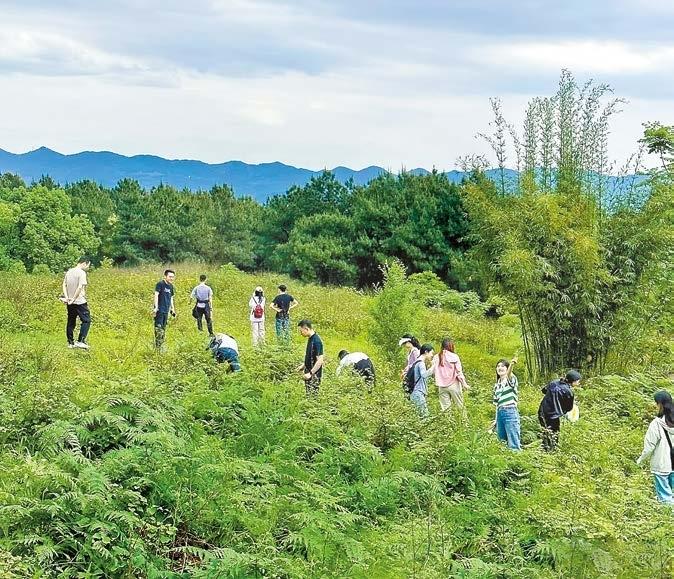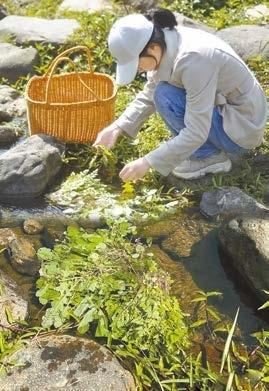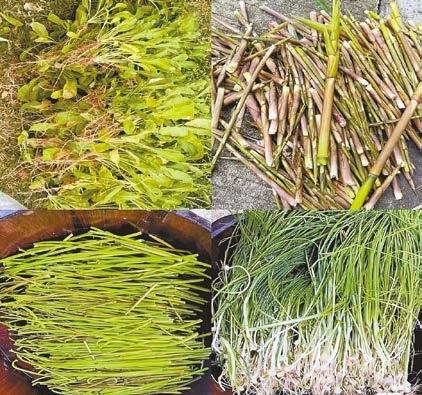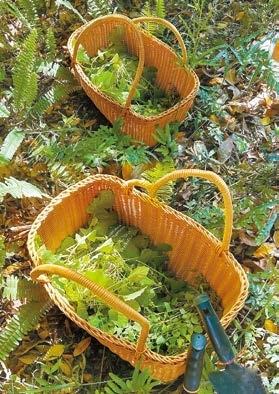



Tang Li 654030846@qq.com ON a March evening, Lily (a pseudonym), a software engineer in Shenzhen, was browsing her phone when she signed up for a weekend wild vegetable foraging trip. The plan was simple: Escape the busy city and experience nature in a unique, hands-on way. Early the following Saturday morning, as the first rays of sunlight pierced through the morning mist, Lily and her companions, armed with small spades, baskets, and even professional wild plant identification guides, set off on their adventure to forage for wild vegetables. In Yangtai Mountain Forest Park, Lily crouched beside a dense cluster of ferns, carefully identifying and delicately plucking the edible plants. “I used to watch my grandmother pick wild vegetables when I was a child, and back then, it was just fun. Now, as an adult, I realize that it’s a wonderful way to reconnect with nature,” she shared. While foraging for wild vegetables isn’t a new activity in China, the trend has seen a shift this spring. The group of foragers in Shenzhen has become younger, with more young adults joining the ranks of this seasonal activity. Gone are the days when it was mainly older generations; now, the city’s millennials and Gen Zers don stylish leisurewear, wielding small gardening spades as they search for wild plants. After a long day of foraging, they take out portable chairs and tables, brew a pot of coffee, and enjoy the unique flavor of spring mixed with the fresh scent of grass. On the social media platform Xiaohongshu, there are over 30,000 posts tagged with “Shenzhen Wild Vegetable Foraging Locations.” The rise of organized, even paid wild vegetable foraging tours led by experienced guides also reflects the growing interest in the activity. It’s clear that, after camping, hiking, and fishing, young people in Shenzhen have found yet another “soul-soothing” pastime in the form of wild vegetable foraging. Why is foraging popular among the young? Rising health consciousness: With increasing awareness of healthy eating, more young people are recognizing the nutritional benefits of wild vegetables. These plants are rich in vitamins, minerals, and dietary fiber while being low in calories, helping to balance the body’s functions. A desire to return to nature: In the fast-paced, skyscraper-filled city, young people are craving a connection to nature. Foraging for wild vegetables has become an effective way for them to release stress and relax. A new social trend: Sharing experiences on social media has made wild vegetable foraging a fashionable lifestyle choice. Young people now share their foraging adventures, wild plant-based recipes, and photos of their finds, fostering greater communication and interaction while attracting others to join the activity. Cultural heritage: Foraging for wild vegetables is an activity deeply rooted in Chinese tradition. It represents reverence for nature and an understanding of the natural world. By participating in foraging, young people not only learn about the plants but also experience the charm of traditional culture. Wild vegetables in SZ and where to find them Some of the most common wild vegetables found in Shenzhen include shepherd’s purse (荠菜), Chinese toon (香椿芽), fern (蕨菜), mugwort (艾蒿), purslane (马齿苋), plantain (车前草), dandelion (蒲公英), and Malantou (马兰头). Here are some prime locations to start your wild vegetable foraging adventure: Yangtai Mountain Forest Park (阳台山森林公园): Known for its abundant wild vegetables like shepherd’s purse and purslane. Metro: Line 6 to Yangtai Mountain East Station (阳台山东站), Exit A Shenzhen Bay Park (深圳湾公园) and surrounding green spaces: This park’s wetlands and grassy areas offer common wild vegetables like shepherd’s purse and dandelion. Metro: Line 9 to Shenzhen Bay Park Station (深圳湾公园站), Exit D2 Bijia Mountain Park (笔架山公园): A lush park with dense vegetation, where wild vegetables like wild onion and shepherd’s purse can be found along the riverbanks. Metro: Line 6 or 9 to Yinhu Station (银湖站), Exit B Meilin Mountain Park (梅林山公园): A natural, untouched area where ferns and bitter herbs grow in abundance, ideal for those willing to explore hiking trails. Metro: Line 9 to Meijing Station (梅景站), Exit C Wutong Mountain (梧桐山): Known for its rich ecosystem, this area is perfect for finding ferns, wild spinach, and other wild greens. Metro: Line 8 to Wutong Mountain South Station (梧桐山南站), Exit D Moshanghua Park (陌上花公园): A lesser-known park with vast fields, providing plenty of wild vegetables like shepherd’s purse and purslane. Metro: Line 6 to Guantian Station (官田站), Exit D; then take Bus M310 or M257 to Moshanghua Park Station (陌上花公园站) Important tips for eating wild vegetables Although wild vegetables can be nutritious, it’s important to follow some guidelines when eating them: ● Do not eat wild plants you don’t recognize or aren’t familiar with. ● Make sure to clean the vegetables thoroughly before consumption. ● Always blanch the wild vegetables to remove potential toxins. ● Don’t overconsume wild vegetables, as many of them are cold in nature and could affect digestion if eaten excessively. | 
